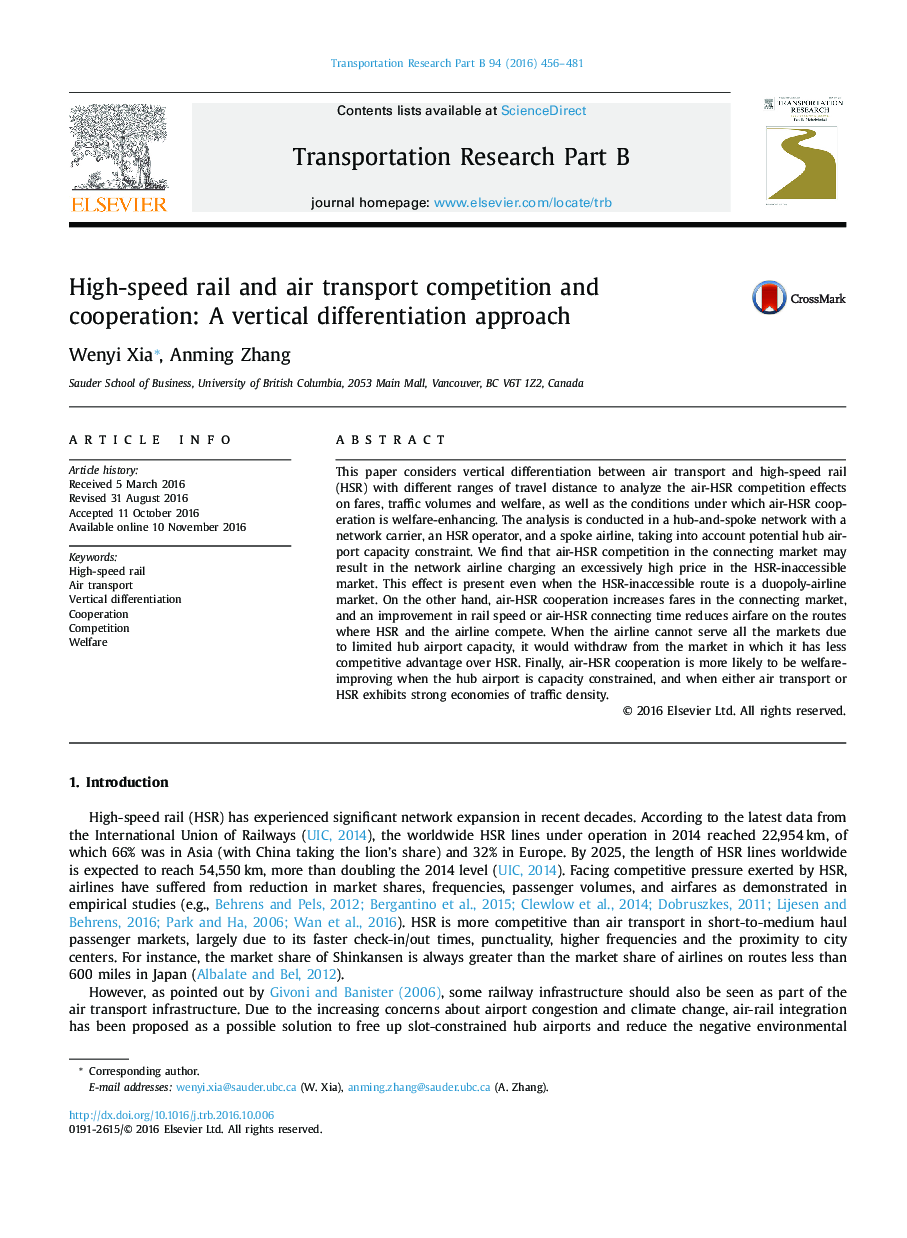| کد مقاله | کد نشریه | سال انتشار | مقاله انگلیسی | نسخه تمام متن |
|---|---|---|---|---|
| 5127165 | 1488952 | 2016 | 26 صفحه PDF | دانلود رایگان |
- Address vertical differentiation between air transport and high-speed rail (HSR) with different ranges of travel distance.
- Airline overprices in the HSR-inaccessible market when competing with HSR no matter whether this market has two airlines or is monopolized by a network airline.
- Air-HSR cooperation increases fares in the connecting market.
- An improvement in rail speed or air-HSR connecting time reduces airfare on the routes where HSR and the airline compete, but rail fare may increase or decrease.
- Air-HSR cooperation is more likely to be welfare-improving when hub airport is capacity constrained, and when either air transport or HSR exhibits strong economies of traffic density.
This paper considers vertical differentiation between air transport and high-speed rail (HSR) with different ranges of travel distance to analyze the air-HSR competition effects on fares, traffic volumes and welfare, as well as the conditions under which air-HSR cooperation is welfare-enhancing. The analysis is conducted in a hub-and-spoke network with a network carrier, an HSR operator, and a spoke airline, taking into account potential hub airport capacity constraint. We find that air-HSR competition in the connecting market may result in the network airline charging an excessively high price in the HSR-inaccessible market. This effect is present even when the HSR-inaccessible route is a duopoly-airline market. On the other hand, air-HSR cooperation increases fares in the connecting market, and an improvement in rail speed or air-HSR connecting time reduces airfare on the routes where HSR and the airline compete. When the airline cannot serve all the markets due to limited hub airport capacity, it would withdraw from the market in which it has less competitive advantage over HSR. Finally, air-HSR cooperation is more likely to be welfare-improving when the hub airport is capacity constrained, and when either air transport or HSR exhibits strong economies of traffic density.
Journal: Transportation Research Part B: Methodological - Volume 94, December 2016, Pages 456-481
